New Testament Canon Lesson 1
Chris Knepp
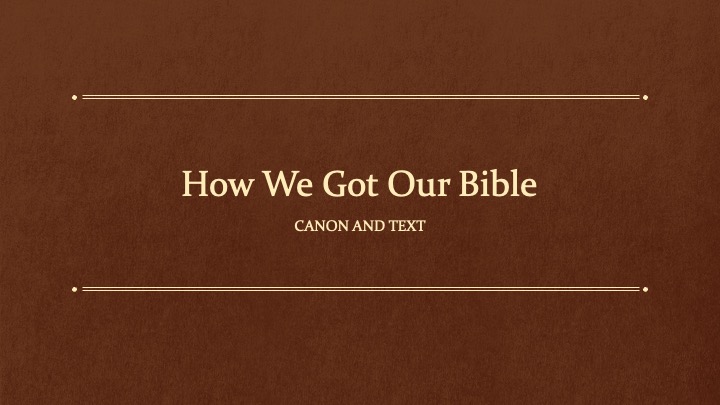
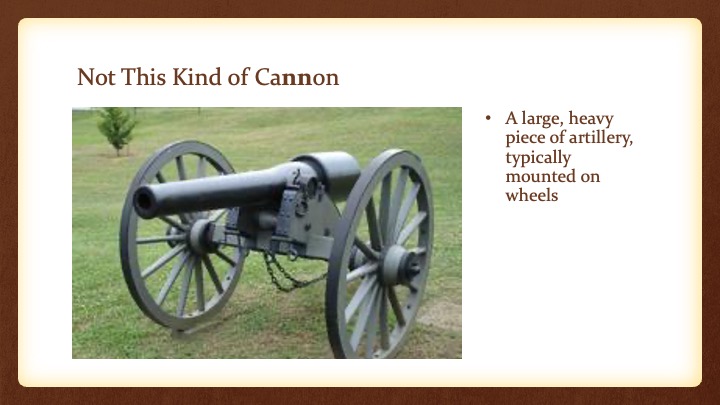
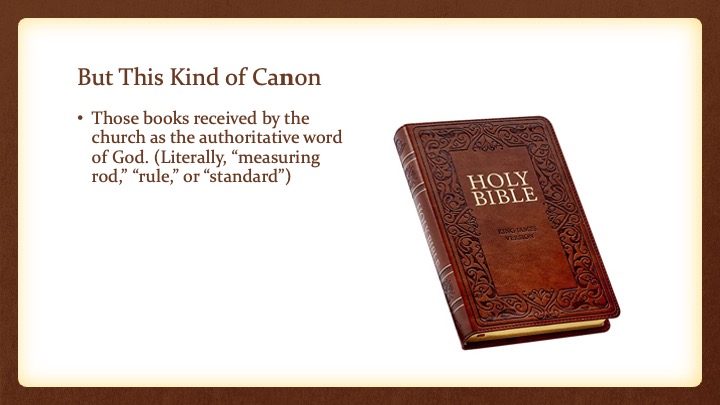
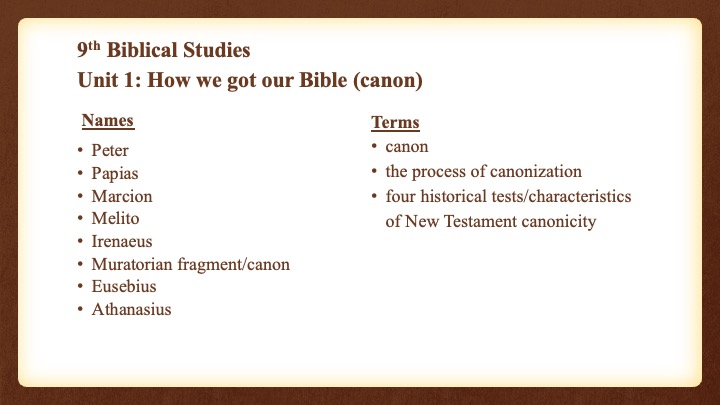
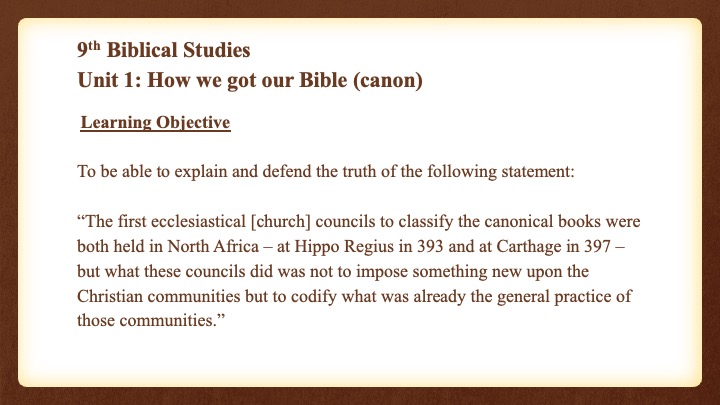
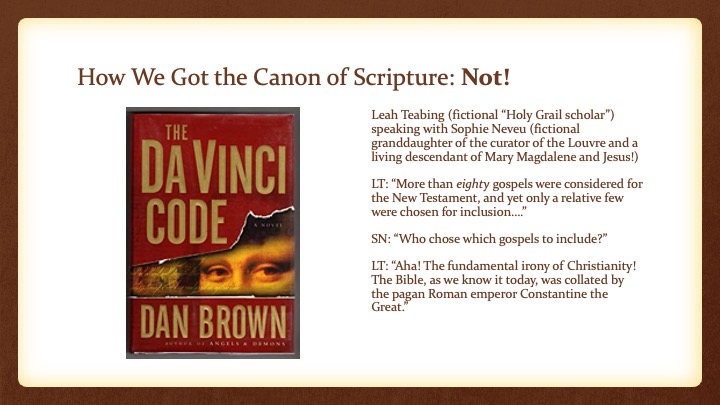
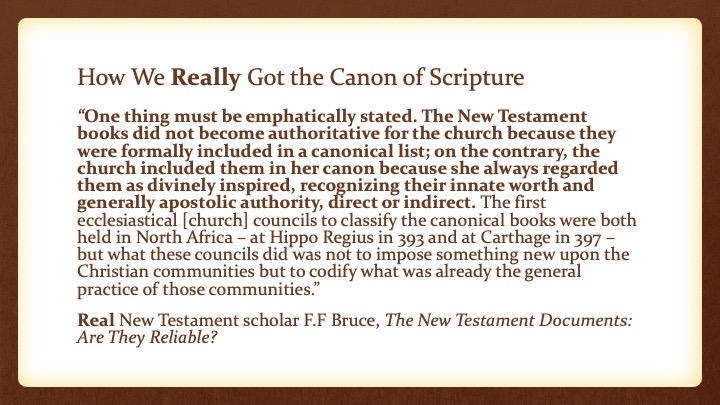
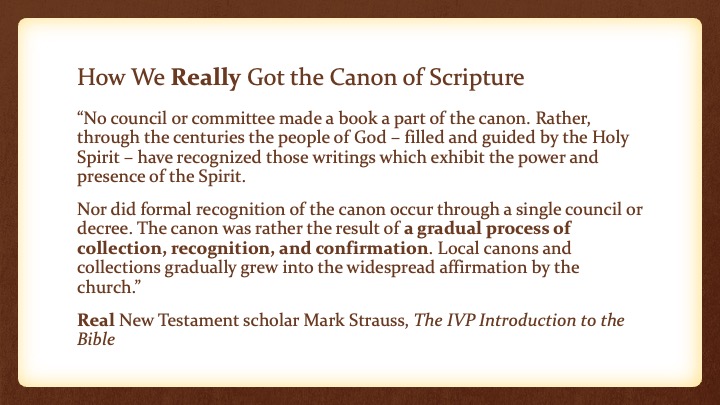
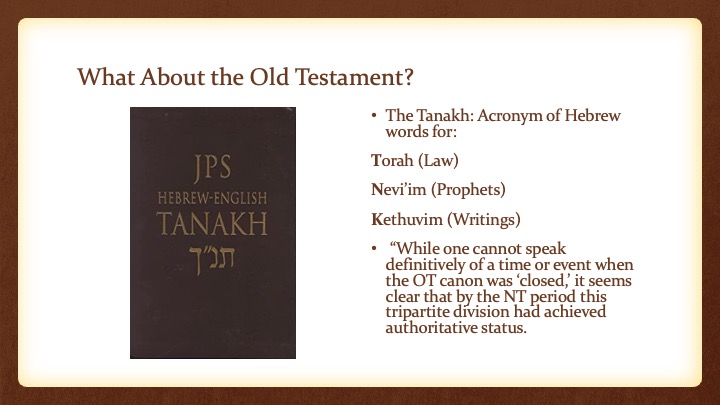
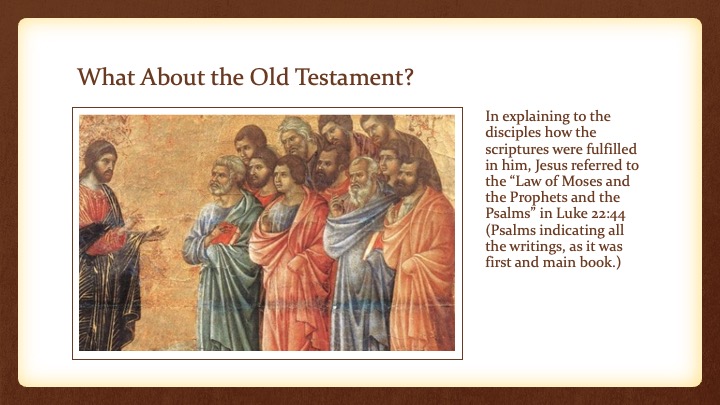
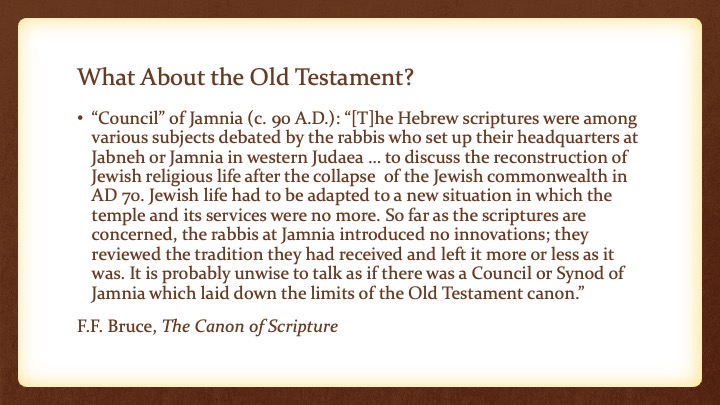
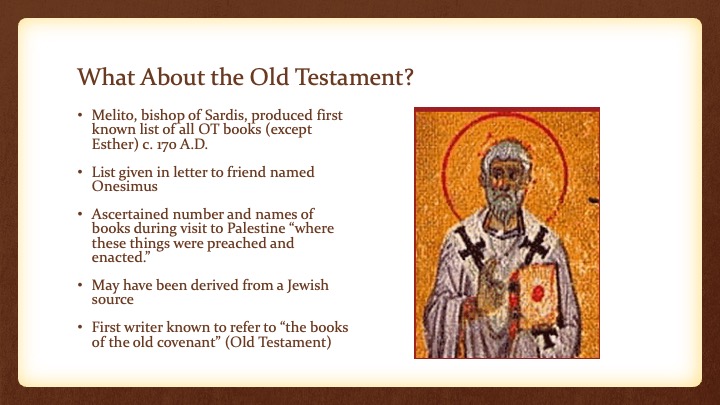
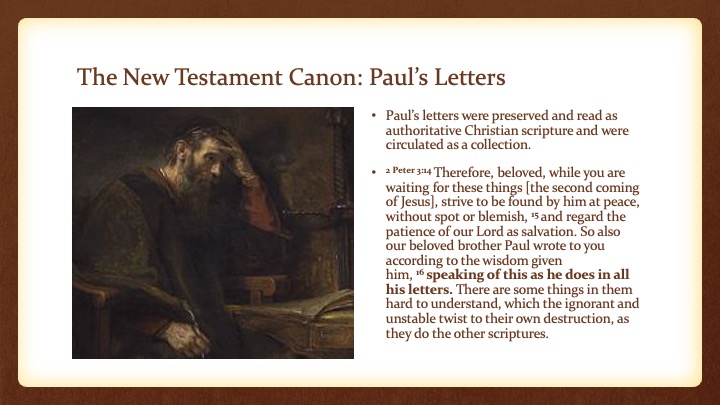
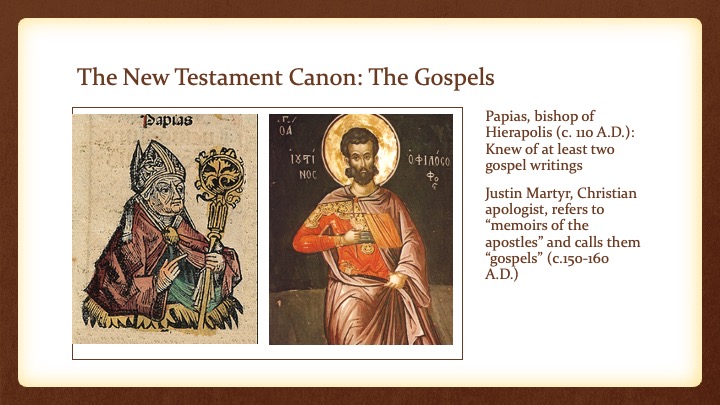
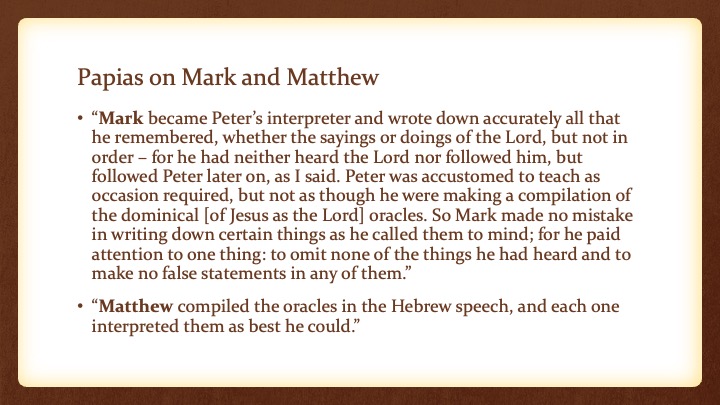
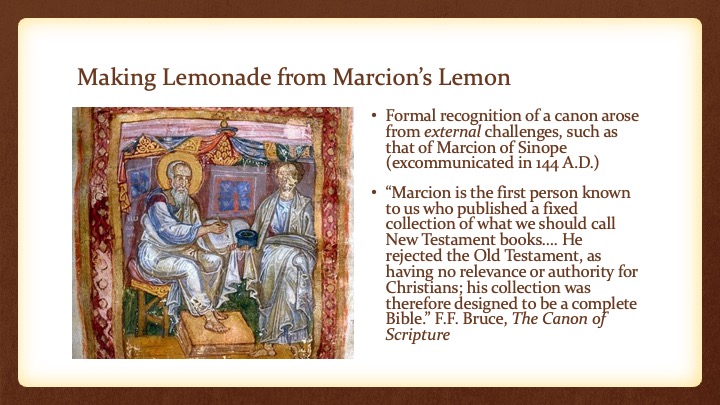
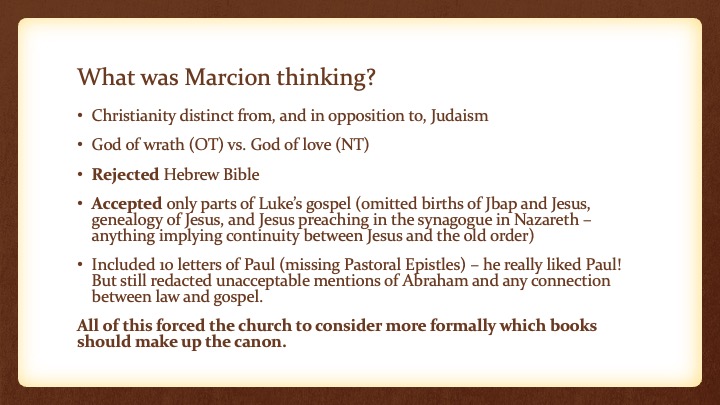
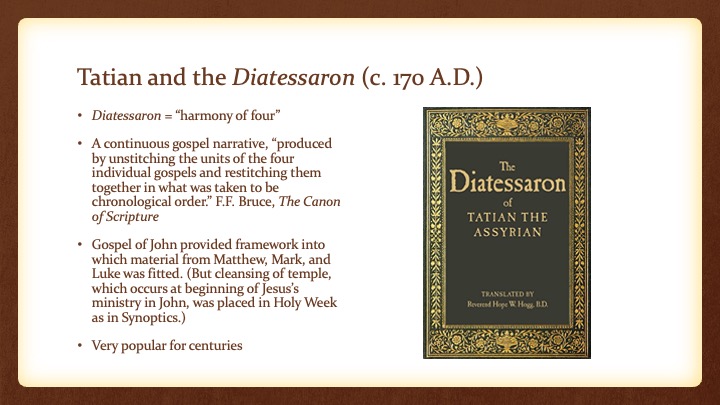
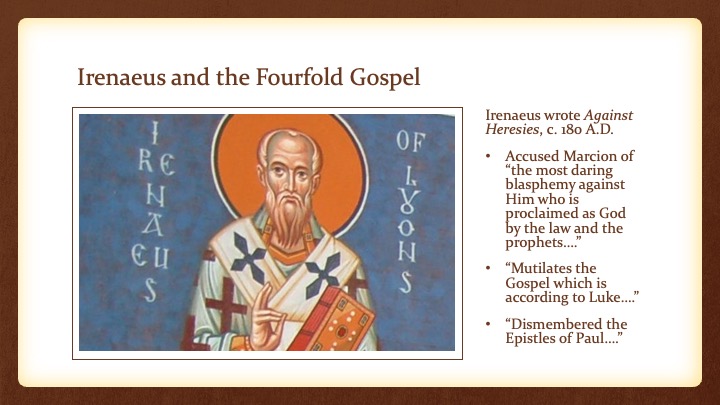
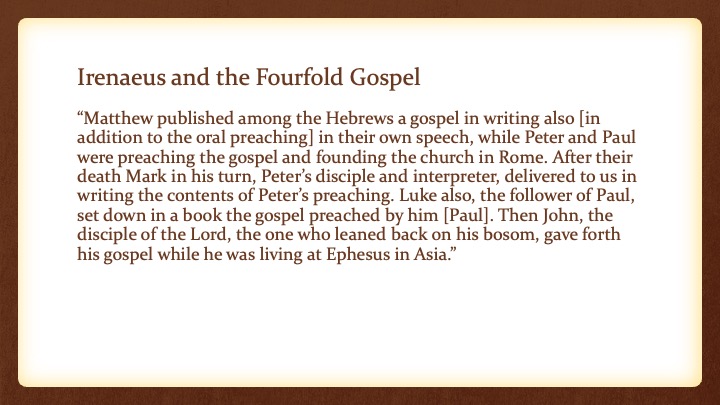
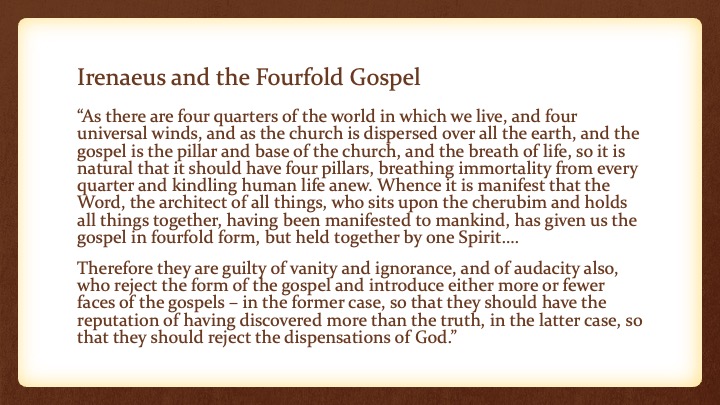
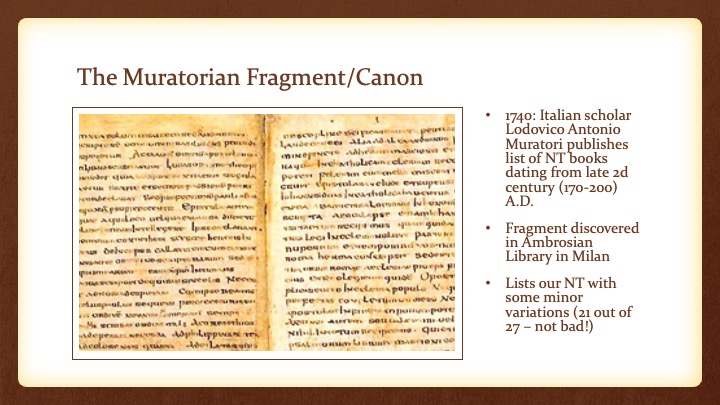
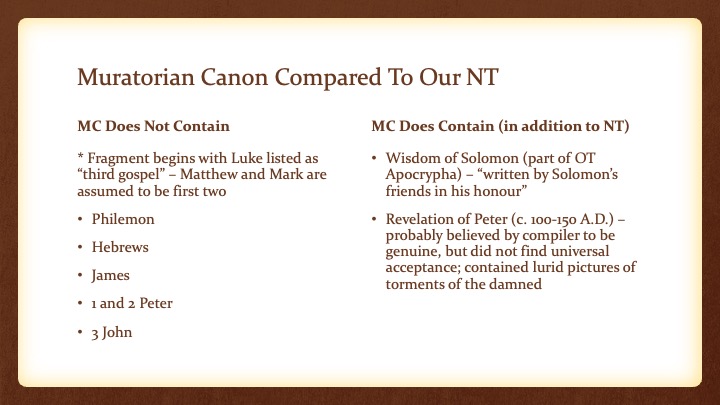
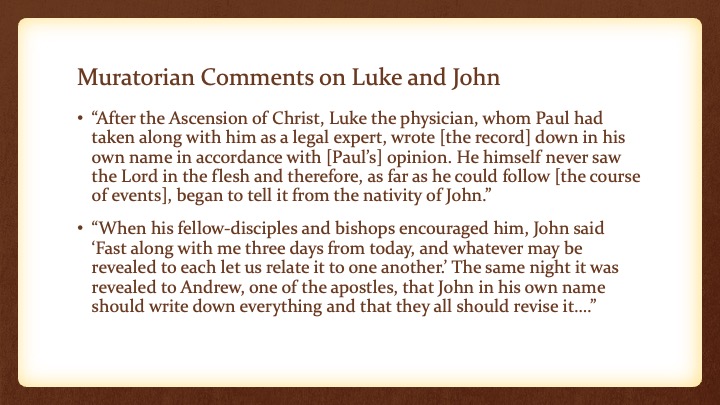
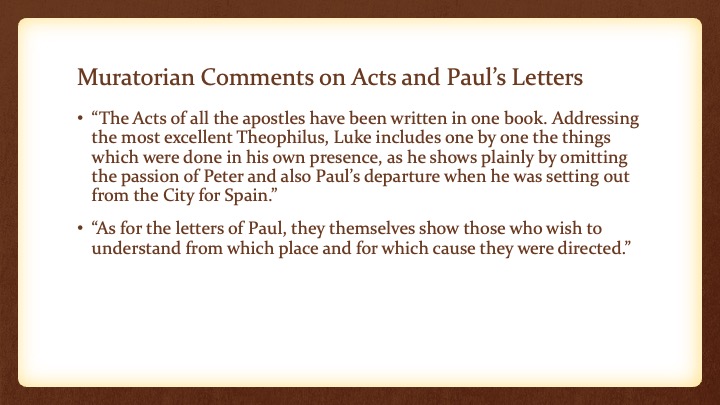
How We Got Our Bible
Canon and Text
How We Got Our Bible
Canon and Text
Canon
Those books received by the church as the authoritative word of God. (Literally, “measuring rod,” “rule,” or “standard”)
How we got our Bible
“The first ecclesiastical [church] councils to classify the canonical books were both held in North Africa – at Hippo Regius in 393 and at Carthage in 397 – but what these councils did was not to impose something new upon the Christian communities but to codify what was already the general practice of those communities.”
First – How Did it not Happen - the way described in “The Da Vinci Code”
Leah Teabing (fictional “Holy Grail scholar”) speaking with Sophie Neveu (fictional granddaughter of the curator of the Louvre and a living descendant of Mary Magdalene and Jesus!)
LT: “More than eighty gospels were considered for the New Testament, and yet only a relative few were chosen for inclusion….”
SN: “Who chose which gospels to include?”
LT: “Aha! The fundamental irony of Christianity! The Bible, as we know it today, was collated by the pagan Roman emperor Constantine the Great.”
How We Really Got the Canon of Scripture
“One thing must be emphatically stated. The New Testament books did not become authoritative for the church because they were formally included in a canonical list; on the contrary, the church included them in her canon because she always regarded them as divinely inspired, recognizing their innate worth and generally apostolic authority, direct or indirect. The first ecclesiastical [church] councils to classify the canonical books were both held in North Africa – at Hippo Regius in 393 and at Carthage in 397 – but what these councils did was not to impose something new upon the Christian communities but to codify what was already the general practice of those communities.”
Real New Testament scholar F.F Bruce, The New Testament Documents: Are They Reliable?
How We Really Got the Canon of Scripture
“No council or committee made a book a part of the canon. Rather, through the centuries the people of God – filled and guided by the Holy Spirit – have recognized those writings which exhibit the power and presence of the Spirit.
Nor did formal recognition of the canon occur through a single council or decree. The canon was rather the result of a gradual process of collection, recognition, and confirmation. Local canons and collections gradually grew into the widespread affirmation by the church.”
Real New Testament scholar Mark Strauss, “Introducing the Bible,” IVP Introduction to the Bible
What About the Old Testament?
The Tanakh: Acronym of Hebrew words for:
Torah (Law)
Nevi’im (Prophets)
Kethuvim (Writings)
“While one cannot speak definitively of a time or event when the OT canon was ‘closed,’ it seems clear that by the NT period this tripartite division had achieved authoritative status.” Mark Strauss, “Introducing the Bible,” IVP Introduction to the Bible
In explaining to the disciples how the scriptures were fulfilled in him, Jesus referred to the “Law of Moses and the Prophets and the Psalms” in Luke 22:44 (Psalms indicating all the writings, as it was first and main book.)
“Council” of Jamnia (c. 90 A.D.): “[T]he Hebrew scriptures were among various subjects debated by the rabbis who set up their headquarters at Jabneh or Jamnia in western Judaea … to discuss the reconstruction of Jewish religious life after the collapse of the Jewish commonwealth in AD 70. Jewish life had to be adapted to a new situation in which the temple and its services were no more. So far as the scriptures are concerned, the rabbis at Jamnia introduced no innovations; they reviewed the tradition they had received and left it more or less as it was. It is probably unwise to talk as if there was a Council or Synod of Jamnia which laid down the limits of the Old Testament canon.”
F.F. Bruce, The Canon of Scripture
• Melito, bishop of Sardis, produced first known list of all OT books (except Esther) c. 170 A.D.
• List given in letter to friend named Onesimus
• Ascertained number and names of books during visit to Palestine “where these things were preached and enacted.”
• May have been derived from a Jewish source
• First writer known to refer to “the books of the old covenant” (Old Testament)
The New Testament Canon: Paul’s Letters
Paul’s letters were preserved and read as authoritative Christian scripture and were circulated as a collection.
2 Peter 3:14 Therefore, beloved, while you are waiting for these things [the second coming of Jesus], strive to be found by him at peace, without spot or blemish, 15 and regard the patience of our Lord as salvation. So also our beloved brother Paul wrote to you according to the wisdom given him, 16 speaking of this as he does in all his letters. There are some things in them hard to understand, which the ignorant and unstable twist to their own destruction, as they do the other scriptures.
The New Testament Canon: The Gospels
Papias, bishop of Hierapolis (c. 110 A.D.): Knew of at least two gospel writings
Justin Martyr, Christian apologist, refers to “memoirs of the apostles” and calls them “gospels” (c.150-160 A.D.)
Papias on Mark and Matthew
“Mark became Peter’s interpreter and wrote down accurately all that he remembered, whether the sayings or doings of the Lord, but not in order – for he had neither heard the Lord nor followed him, but followed Peter later on, as I said. Peter was accustomed to teach as occasion required, but not as though he were making a compilation of the dominical [of Jesus as the Lord] oracles. So Mark made no mistake in writing down certain things as he called them to mind; for he paid attention to one thing: to omit none of the things he had heard and to make no false statements in any of them.”
“Matthew compiled the oracles in the Hebrew speech, and each one interpreted them as best he could.”
Making Lemonade from Marcion’s Lemon
Formal recognition of a canon arose from external challenges, such as that of Marcion of Sinope (excommunicated in 144 A.D.)
“Marcion is the first person known to us who published a fixed collection of what we should call New Testament books…. He rejected the Old Testament, as having no relevance or authority for Christians; his collection was therefore designed to be a complete Bible.” F.F. Bruce, The Canon of Scripture
What was Marcion thinking?
• Christianity distinct from, and in opposition to, Judaism
• God of wrath (OT) vs. God of love (NT)
• Rejected Hebrew Bible
• Accepted only parts of Luke’s gospel (omitted births of Jbap and Jesus, genealogy of Jesus, and Jesus preaching in the synagogue in Nazareth – anything implying continuity between Jesus and the old order)
• Included 10 letters of Paul (missing Pastoral Epistles) – he really liked Paul! But still redacted unacceptable mentions of Abraham and any connection between law and gospel.
All of this forced the church to consider more formally which books should make up the canon.
Tatian and the Diatessaron (c. 170 A.D.)
Diatessaron = “harmony of four”
A continuous gospel narrative, “produced by unstitching the units of the four individual gospels and restitching them together in what was taken to be chronological order.” F.F. Bruce, The Canon of Scripture
Gospel of John provided framework into which material from Matthew, Mark, and Luke was fitted. (But cleansing of temple, which occurs at beginning of Jesus’s ministry in John, was placed in Holy Week as in Synoptics.)
Very popular for centuries
Irenaeus and the Fourfold Gospel
Irenaeus wrote Against Heresies, c. 180 A.D.
Accused Marcion of “the most daring blasphemy against Him who is proclaimed as God by the law and the prophets….”
“Mutilates the Gospel which is according to Luke….”
“Dismembered the Epistles of Paul….”
“Matthew published among the Hebrews a gospel in writing also [in addition to the oral preaching] in their own speech, while Peter and Paul were preaching the gospel and founding the church in Rome. After their death Mark in his turn, Peter’s disciple and interpreter, delivered to us in writing the contents of Peter’s preaching. Luke also, the follower of Paul, set down in a book the gospel preached by him [Paul]. Then John, the disciple of the Lord, the one who leaned back on his bosom, gave forth his gospel while he was living at Ephesus in Asia.”
“As there are four quarters of the world in which we live, and four universal winds, and as the church is dispersed over all the earth, and the gospel is the pillar and base of the church, and the breath of life, so it is natural that it should have four pillars, breathing immortality from every quarter and kindling human life anew. Whence it is manifest that the Word, the architect of all things, who sits upon the cherubim and holds all things together, having been manifested to mankind, has given us the gospel in fourfold form, but held together by one Spirit….
Therefore they are guilty of vanity and ignorance, and of audacity also, who reject the form of the gospel and introduce either more or fewer faces of the gospels – in the former case, so that they should have the reputation of having discovered more than the truth, in the latter case, so that they should reject the dispensations of God.”
The Muratorian Fragment/Canon
• 1740: Italian scholar Lodovico Antonio Muratori publishes list of NT books dating from late 2d century (170-200) A.D.
• Fragment discovered in Ambrosian Library in Milan
• Lists our NT with some minor variations (21 out of 27 – not bad!)
Muratorian Canon Compared To Our NT
MC Does Not Contain
* Fragment begins with Luke listed as “third gospel” – Matthew and Mark are assumed to be first two
• Philemon
• Hebrews
• James
• 1 and 2 Peter
• 3 John
MC Does Contain (in addition to NT)
• Wisdom of Solomon (part of OT Apocrypha) – “written by Solomon’s friends in his honour”
• Revelation of Peter (c. 100-150 A.D.) – probably believed by compiler to be genuine, but did not find universal acceptance; contained lurid pictures of torments of the damned
Muratorian Comments on Luke and John
• “After the Ascension of Christ, Luke the physician, whom Paul had taken along with him as a legal expert, wrote [the record] down in his own name in accordance with [Paul’s] opinion. He himself never saw the Lord in the flesh and therefore, as far as he could follow [the course of events], began to tell it from the nativity of John.”
• “When his fellow-disciples and bishops encouraged him, John said ‘Fast along with me three days from today, and whatever may be revealed to each let us relate it to one another.’ The same night it was revealed to Andrew, one of the apostles, that John in his own name should write down everything and that they all should revise it….”
Muratorian Comments on Acts and Paul’s Letters
• “The Acts of all the apostles have been written in one book. Addressing the most excellent Theophilus, Luke includes one by one the things which were done in his own presence, as he shows plainly by omitting the passion of Peter and also Paul’s departure when he was setting out from the City for Spain.”
• “As for the letters of Paul, they themselves show those who wish to understand from which place and for which cause they were directed.”
Finis